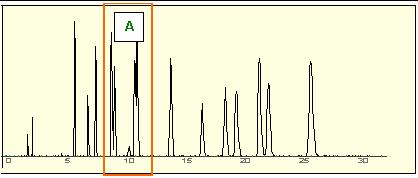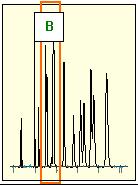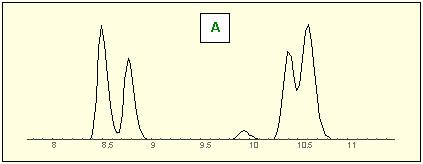Reduction of
Sampling Time in Chromatography by Digital Superresolution
When columns are shortened by a
factor f, sampling times are shortened by the same factor but
resolution is lowered by sqrt(f).
On the other hand, if these data with lowered resolution are
superresolved in turn, the new resolution is raised back.
E.g., reducing column lengths by
66% and then doubling the resulting data's resolution leads to
the same peak information as before in only 33% the time.
| Application |
Black
line: Original
data
Grey
solid: Superresolution
Green
line: Kernel |
| 1. Long column In the example, in 30 minutes
elution is sufficient to separate all peaks.
The interval in the orange
box is zoomed ini A.
|
 |
| 2. Short column The same charge as in 1 is eluted
on a column with 66% length.
Now some peaks overlap..
The interval in the orange
box is zoomed in B
|
 |
| Superresolution of the
accelerated measurement A is the zoomed interval from the
long column.
B is the zoomed interval from the
short column. Superresolution is displayed in solid grey.
Obviously, B's
superresolution is as informative as A's original, but in
33% of sampling time.
No additional eqipment
is needed to to get an approximate two - to fourfold
sample throughput, when digital superresolution is used..
|
 
|
Superresolution requires robust
baseline correction.
In PROANALYSI::PEAKS, you find baseline-routines
optimized for many special chromatographical procedures.
The complete sequence of data analysis can be automatted and
perfomed by simply pressing a button.



